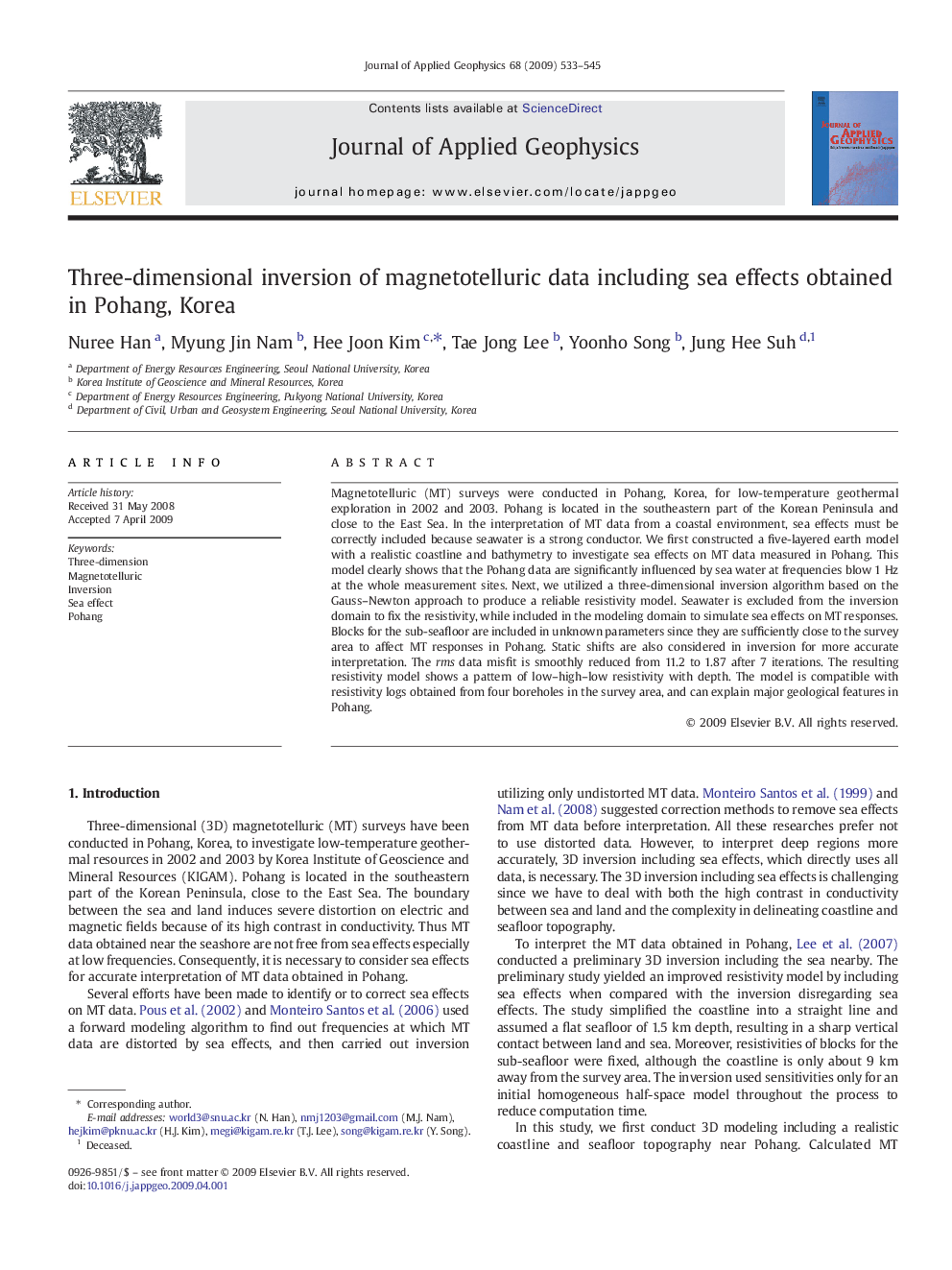| Article ID | Journal | Published Year | Pages | File Type |
|---|---|---|---|---|
| 4740931 | Journal of Applied Geophysics | 2009 | 13 Pages |
Magnetotelluric (MT) surveys were conducted in Pohang, Korea, for low-temperature geothermal exploration in 2002 and 2003. Pohang is located in the southeastern part of the Korean Peninsula and close to the East Sea. In the interpretation of MT data from a coastal environment, sea effects must be correctly included because seawater is a strong conductor. We first constructed a five-layered earth model with a realistic coastline and bathymetry to investigate sea effects on MT data measured in Pohang. This model clearly shows that the Pohang data are significantly influenced by sea water at frequencies blow 1 Hz at the whole measurement sites. Next, we utilized a three-dimensional inversion algorithm based on the Gauss–Newton approach to produce a reliable resistivity model. Seawater is excluded from the inversion domain to fix the resistivity, while included in the modeling domain to simulate sea effects on MT responses. Blocks for the sub-seafloor are included in unknown parameters since they are sufficiently close to the survey area to affect MT responses in Pohang. Static shifts are also considered in inversion for more accurate interpretation. The rms data misfit is smoothly reduced from 11.2 to 1.87 after 7 iterations. The resulting resistivity model shows a pattern of low–high–low resistivity with depth. The model is compatible with resistivity logs obtained from four boreholes in the survey area, and can explain major geological features in Pohang.
